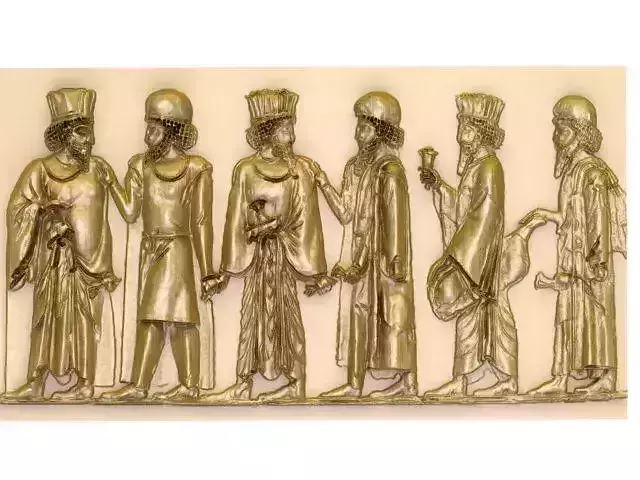1/4
The bas-relief of Achaemenid soldiers is among the prominent artistic and historical artifacts remaining from the Achaemenid Empire (circa 550 to 330 BCE). These bas-reliefs are typically carved on stones, palace walls, and royal tombs, providing valuable insights into the culture, militarism, and art of that era.Features of the Achaemenid Soldiers' Bas-Relief:
Symbolic and Ceremonial Designs: The bas-reliefs of Achaemenid soldiers often depict rows of soldiers, showcasing the discipline and order of the Achaemenid military. These soldiers are usually shown carrying spears, bows, or shields, wearing uniform and orderly attire.
Clothing and Equipment: The soldiers in these bas-reliefs are often depicted wearing long, pleated garments, felt or metal hats, and simple shoes. Their equipment includes spears, bows, quivers, and sometimes shields, reflecting their military readiness.
Ethnic Diversity: The Achaemenid Empire was a multi-ethnic empire, and its army consisted of soldiers from various ethnic groups. In some bas-reliefs, differences in appearance and clothing highlight the presence of diverse ethnicities within the Achaemenid army.
Important Locations: Some of the most famous bas-reliefs of Achaemenid soldiers are found in places like Persepolis, Naqsh-e Rostam, and Bisotun. For example, in Persepolis, there are bas-reliefs of the Immortals (elite Achaemenid soldiers) shown guarding or participating in ceremonial events.
Artistic and Political Purposes: These bas-reliefs not only had artistic value but were also used as tools to display the power and grandeur of the Achaemenid Empire. They represented order, military strength, and the soldiers' loyalty to the king.
Historical Significance:
The bas-reliefs of Achaemenid soldiers are not only artistic works but also important historical sources for understanding the military, social, and cultural structures of the Achaemenid Empire. They reflect the expertise of the artists of that era and the significance of militarism in maintaining and expanding this vast empire.
Today, these bas-reliefs are regarded as cultural heritage of Iran and the world, attracting the attention of archaeologists, historians, and art enthusiasts.
REVIEWS & COMMENTS
accuracy, and usability.




